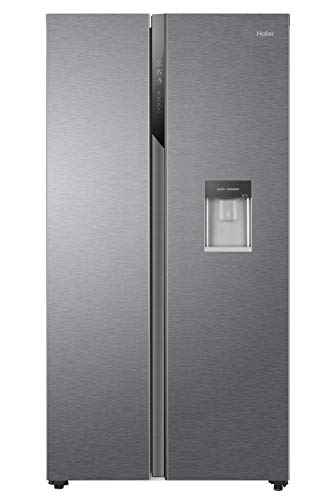Understanding Fridges and Freezers: The Essential Kitchen Appliances
Refrigerators and freezers are 2 of the most essential appliances in contemporary cooking areas. These devices serve an important role in food conservation and waste decrease by ensuring that disposable items remain fresh and safe for consumption. Fridge Freezer Online explores the various types of fridges and freezers, their functionalities, and essential factors to consider for selection and upkeep.
Types of Refrigerators
The market provides a variety of refrigerator types, each created to meet different consumer needs. Below is a list of the most common kinds of fridges:
Top-Freezer Refrigerators
- Most typical type.
- Freezer compartment lies above the refrigerator area.
- Typically more inexpensive and energy-efficient.
Bottom-Freezer Refrigerators
- Freezer is located at the bottom.
- Allows easier access to fresh items at eye level.
- Typically features pull-out drawers for much better company.
Side-by-Side Refrigerators
- Refrigerator and freezer areas are adjacent.
- Ideal for narrow kitchen areas and enables easy access to both compartments.
- Often features water and ice dispensers.
French Door Refrigerators
- Integrates a bottom freezer with double doors at the top.
- Offers ample storage and stylish styles.
- Frequently consists of features like temperature-controlled drawers.
Compact Refrigerators
- Smaller size perfect for limited spaces.
- Typically utilized in dorm spaces, little apartment or condos, or as secondary fridges.
Table 1: Comparison of Refrigerator Types
| Type | Advantages | Disadvantages | Typical Size |
|---|---|---|---|
| Top-Freezer | Budget friendly, energy-efficient | Less convenient access to the freezer | 14-30 cu. ft. |
| Bottom-Freezer | Easier access to fresh food | Freezer can be more difficult to arrange | 19-30 cu. ft. |
| Side-by-Side | Easy access, water/ice dispenser | Narrow vs. storage space | 22-30 cu. ft. |
| French Door | Elegant, large, organized | More pricey | 20-30+ cu. ft. |
| Compact | Space-saving, portable | Restricted storage | 1.7-5.5 cu. ft. |
Types of Freezers
Freezers are a similarly essential home appliance for food preservation. read on are available in numerous designs created to fit different home requirements. Consider the following types:
Upright Freezers
- Run like a standard refrigerator with vertical storage.
- Simpler to arrange with racks and compartments.
Chest Freezers
- Big, horizontal style normally providing more storage area.
- Maintains temperature levels much better during power outages.
- More energy-efficient than upright models.
Portable Freezers
- Compact systems ideal for outdoor activities or little spaces.
- Frequently used for camping journeys or as momentary storage.
Table 2: Comparison of Freezer Types
| Type | Advantages | Downsides | Typical Size |
|---|---|---|---|
| Upright Freezer | Easier to arrange | Less energy-efficient, more floor area | 5-20 cu. ft. |
| Chest Freezer | Holds more items, energy-efficient | Harder to organize | 5-25 cu. ft. |
| Portable Freezer | Compact and versatile | Minimal storage capacity | 1-10 cu. ft. |
Key Features to Consider
When picking a fridge or freezer, consumers ought to keep in mind numerous functions that can improve functionality:
- Energy Efficiency: Look for models with the ENERGY STAR certification to save money on electrical power expenses.
- Storage Capacity: Evaluate storage requirements based on household size and eating routines.
- Temperature Control: Some devices offer digital controls for accurate temperature settings.
- Adjustable Shelving: Customizable shelving enables for ideal organization.
- Water and Ice Dispenser: Offers convenience however can use up valuable area inside.
- Sound Level: Sound scores can influence convenience, particularly in open-concept homes.
Benefits and drawbacks of Having a Fridge and Freezer
While fridges and freezers are vital technologies, they also have specific benefits and drawbacks:
| Pros | Cons |
|---|---|
| Preserve food life expectancy and decrease waste | Require routine maintenance |
| Enable bulk buying and meal prepping | Can be costly to buy and run |
| Deal benefit and quick access to food | Inhabit considerable kitchen area space |
Upkeep Tips
To ensure longevity and optimum performance of fridges and freezers, think about the following upkeep pointers:
- Regular Cleaning: Clean the interior and exterior occasionally to avoid buildup of dirt and germs.
- Examine Seals: Inspect door seals frequently for leaks to keep performance.
- Temperature Settings: Keep the fridge at 34-38 ° F and the freezer at 0 ° F for optimal food preservation.
- Thaw as Needed: Chest freezers should be defrosted frequently to preserve efficiency.
- Clear Air Vents: Ensure that airflow isn't blocked to improve energy effectiveness.
Frequently asked questions About Fridges and Freezers
Q1: How long can food be kept in a freezer?A: Most foods can be kept in a freezer for several months. Meats and poultry frequently last 4-12 months, while veggies can last up to 8-12 months.
Q2: How typically should I clean my fridge and freezer?A: It is a good idea to clean your fridge and freezer every 3 to 6 months, or as required when spills occur. Q3: Can I put hot food directly in the fridge?A: It is suggested to cool hot food to room temperature before placing it in the fridge to avoid
raising the temperature level inside the home appliance. Q4: Why is my fridge running constantly?A: This could be due to a malfunctioning thermostat, blocked coils, or door seals that aren't working appropriately. Fridges and freezers are invaluable
assets to modern-day homes, providing important services for food storage and conservation.
Understanding the different types, functions, and maintenance requirements can help customers pick the right appliances for their needs and maximize their functionality. Welcoming energy-efficient designs not just supports sustainable practices however also contributes to significant cost savings on utility costs, making notified options more important than ever.

